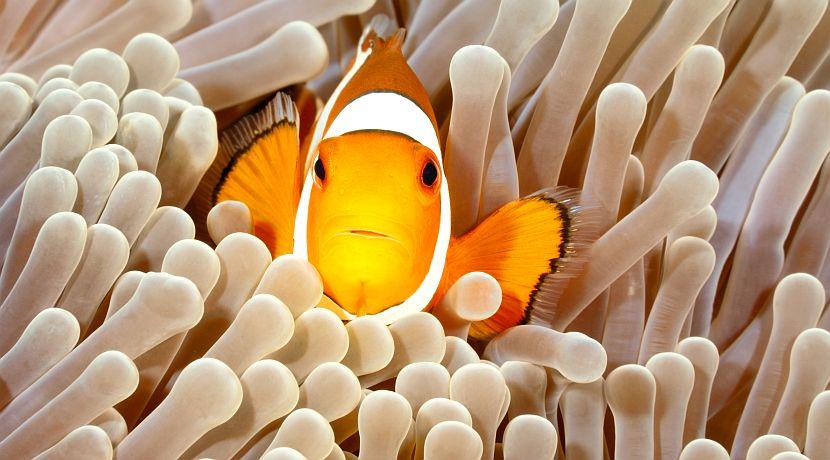Today our aim is to whisk you away from your office or television screen and take you beneath the waves of the Raja Ampat Diving Project over in Indonesia. Raja Ampat is located in the Coral Triangle, meaning it is right at the heart of the world’s coral reef biodiversity. The seas around this island paradise are home to an incredible 75% of all known coral species, and as a result the number of different animal species that live here is staggering! Let’s take a look at just a few of them!
Clownfish

Made famous by the film Finding Nemo, clownfish have become one of the most instantly recognisable tropical fish in the ocean! There are 30 different species of clownfish known to exist today, but this number may well be higher. The most famous of all of these though is the Ocellaris clownfish, and its orange and white colouration will be instantly recognisable to most. What is perhaps most interesting about these small fish is their hierarchical structure. The largest and most dominant female is found at the top, and only two of the fish, a male and a female, in a group will reproduce through external fertilisation. Clownfish are sequential hermaphrodites, and this means that they develop into males first, and when they mature they become female. Then, if the dominant female is removed from the group, one of the males will become female and take her role!
Dugong

Dugongs are one of the world’s most unique looking animals, and they are also one of the most endangered. Other names for the Dugong include “sea cow” and “sea pig”, and once you see an image of the animal you’ll see why! Dugongs are in grave danger of going extinct, and this is for a number of reasons. One of which is their long lifespan and slow breeding cycle, but the most prominent reason why the Dugongs numbers are so low is due to hunting. They make easy targets thanks to their large mass and the fact that they graze in shallow waters. With only around 85,000 individuals remaining, it may already be too late to save the Dugong.
Sea Turtles

The waters around Raja Ampat are home to five different species of sea turtle, but the most common are the Green and Hawksbill. As is the issue everywhere around the world, sea turtles in the Raja Ampat area are struggling to survive due to poachers and people taking their eggs to sell on to a third party. However, with that being said, diving in Raja Ampat remains one of the best ways to see sea turtles in their natural environments.
Manta Rays

Manta Rays know how to live as they can only be found in the warm, tropical waters of the world’s oceans. These ancient creatures can trace their history back around 5 million years, and they would not look too out of place in the next Jurassic Park film! These deep sea divers are famed for their brains, but please don’t be too alarmed if you see one! They are harmless towards humans which is in stark contrast to their cousins, the sting ray.
Mantis Shrimp
By no means the biggest animal you will come across in your time in Raja Ampat, we can safely say that the Mantis Shrimp packs a punch which is well above its weight! These tiny terrors have specially designed claws to either club or spear their prey to death, and as a result of this they have been given the rather ominous name of “thumb-splitters.” These predators are powerful enough to break through the shell of a crab or clam, so we don’t recommend getting on the wrong side of a mantis shrimp!
Raja Ampat is classified as one of the world’s premier diving locations, bustling with an abundance of wildlife which cannot be found anywhere else on Earth. If you would like the chance to partake in an incredible animal conservation project whilst improving your diving skills, then why not check out the project page?














